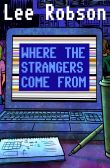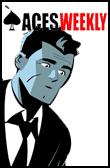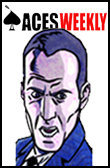I make no bones about my absolute love of that series; it was - and continues to be - a massive influence on me. I think I was the right age to be wowed by the toy line when they appeared over here (I mean, they were cars and jets that changed into robots! What was not to love?) and the comic series that came from Marvel UK was actually just an extension of that. It's probably worth noting here, too, that, the basic origin story aside, the comic series was completely different to the cartoon series. The comic actually featured Spider-Man, for one thing:
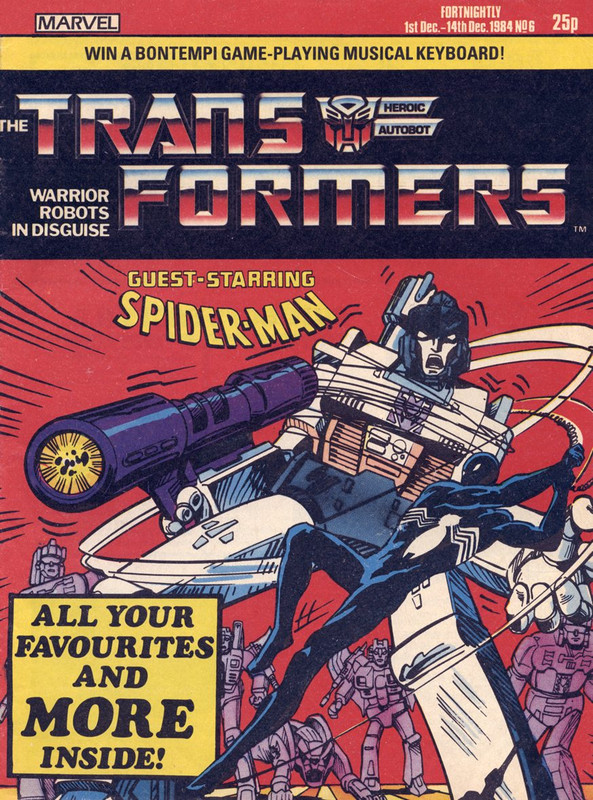 |
| Tranformers (UK) #6 |
Spider-Man wasn't the only Marvel character to turn up in Transformers. We also had a brief cameo from Nick Fury and Dum Dum Dugan and it was established that Shockwave and the Dinobots actually disappeared in The Savage Land, but. But, oddly enough, all of that was glossed over in subsequent issues as the Transformers were quickly and quietly erased from the Marvel Universe.
Those first few issues of the UK series were OK, but there was nothing particularly memorable about them (maybe apart from the cliffhanger at the end of #8), but after a time, something happened that took my young self off guard. Gone was the slightly scrappy, poorly coloured artwork and in its place was a new story, set in England. The jingoistics and bombast of what had come before were replaced with something much quieter and smaller in scale that had a sense of almost Spielberg-like wonder about it. For the first time, the story centred around a kid - not a teenager, as they'd used in the US series, but an actual kid, like me; Sammy - said kid - encountering the alien robots for the first time held a certain sense of creeping terror that the previous stories had lacked.
The story was Man Of Iron by Steve Parkhouse, John Ridgeway and Mike Collins, which, to this day, remains a stone classic. That was followed by two more stories, drawn by Ridgeway, Collins and Jeff Anderson, but scripted by Simon Furman. In the first, The Enemy Within, we had Brawn and Starscream turning against their comrades, before they're both forced into single combat through an ancient Cybertronian tradition. That story was followed by Raiders Of The Last Ark, which saw the AI of the Autobot's ship turn against them and the invading Decepticons, putting the respective leaders on trial for their crimes.
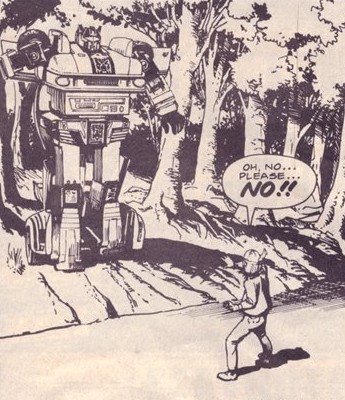 |
| From Man Of Iron by Steve Parkhouse and John Ridgeway |
All of these stories had a slighter darker tone, one that seemed to go against what had come before and offer something different from the simple black and white morality of their predecessors. These weren't stories about Good Robots fighting Bad Robots, they were stories about the impact of the apparently never ending war on the soldiers themselves and the toll it was taking on them and the alien world around them; they were stories that began to paint these characters in a different light. It felt as if they were just one step away from changing sides, as their dissatisfaction grew. But, after those three stories, we were back to the poorly rendered comics that continued the story from #8 and my interest began to wane again.
What I didn't know at the time was that Marvel UK were re-printing the US series, but, because it was a monthly series and the UK series was fortnightly (later weekly), they were going to run out of material to print quickly and had to come up with original content to slot into the gaps. It became clear - and it's even clearer now - the UK creators saw this differently to their US counterparts; whereas the stories coming from the US were clearly being hacked out for paycheques, the UK team were injecting something different into the mix. Rather than looking at it as a toy tie-in comic, they saw it as an sci-fi dventure comic that just so happened to star giant alien robots, and, as a result, we had some great stories and some truly amazing artwork from Will Simpson, Barry Kitson, John Ridgeway, Lee Sullivan, Andrew Wildman, Simon Coleby, Staz Johnson, Dan Reed, Bryan Hitch and the incomparable Geoff Senior gracing the pages of the series down the years.
However, the other key difference between the US and UK series came from the writing. Whereas Bob Budiansky (who took over as the regular writer after stints by Bill Mantlo, Ralph Macchio and Jim Salicrup in the first four US issues alone) was scripting simple tales of good versus evil to shill the toys, Simon Furman was pulling us into the moral grey areas of the Autobot/Decepticon conflict, and adding previously unseen shades to the characters, fleshing them out in ways the US series failed to do in any meaningful way; Optimus Prime, for example, was no longer the heroic Autobot leader, but someone (or something, if you want to be pedantic) that was conflicted and troubled about his position and place in the grander scheme of things, but still stepped up to the plate when he had to; Megatron broke out of his two-dimensional villain mould and became a far more tactical thinker, always several moves ahead of his opponents, who now felt like a genuine nemesis for Optimus Prime.
It was this approach, combined with the artistic talents of the aforementioned people that helped catapult Transformers UK into something different. The US series began to throw increasingly silly elements into the stories (such as Megatron losing his higher brain functions and being unable to think for himself and "Robot Master" - and, God, don't get me started on the Decepticon's holiday resort or "The Carwash Of Doom"), which, even as a kid, I could see where just utterly terrible.
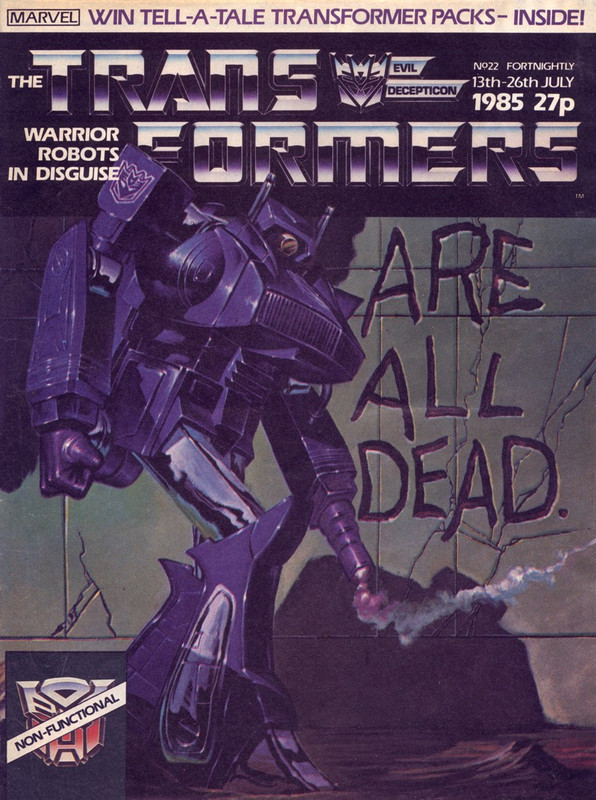 |
| Transformers (UK) #22 |
But the UK originated material not only treat the intelligence of the readers with respect, it also treat the entire concept of the Transformers with an equal level of respect. Weaved in between the US reprints, we had stories such as The Icarus Theory, Dinobot Hunt and In The National Interest, which dared to ask complex questions and lay out equally complex situations for the protagonists; we were being shown a world painted in shades of grey (Marvel UK also did this with the Action Force series, giving it a far more cynical edge than G.I. Joe). And all of it was brought to vivid, vibrant life by artists who made these characters leap off the pages in ways they never had in the US reprints. Whereas across the pond, we had veterans like Herb Trimpe, Frank Springer and Alan Kuperberg rendering these stories in the Mighty Marvel Style, over here, we had Will Simpson, Barry Kitson and, of course, Geoff Senior bringing a dynamism to the page layouts and action sequences we'd never seen before. They genuinely felt exciting to me as a kid, like action comics were supposed to. These were the Transformers I wanted to read about.
These original UK stories also had their own sense of continuity that felt much more stable and complete than their US counterparts. However, the constant return to those reprints - to me, anyway - began to slowly undermine the far superior stories coming from the UK; the addition of Circuit Breaker (a metahuman with a hatred of all giant, alien robots and the means of killing them) and the Autobots saving a rock concert (with Brick Springhorn and The Tenth Avenue Band!) from some nonsensical Decepticon plot just felt completely at odds with what Furman et al were doing and could barely hold my interest. I remember actually skimming the US reprints when they were running, hoping the better stories would return.
And then came Transformers: The Movie.
I could fill this entire post with clips from that, from Leonard Nimoy's growling Galvatron to Robert Stack's prideful take on Ultra Magnus, but I'm just going to settle on this one, which is, frankly, the greatest moment of the film (and the only time you're actually allowed to like this song unironically):
The Movie came out in 1986, and - according to the forewords in the Titan collections of the Transformers UK strips, anyway - Marvel US planned to ignore it completely, seeing as it was an extension of the cartoon series. However, the Marvel UK team seized on the opportunity to use the film as a springboard for a brand new continuity, completely separate from the US, but still attached to it when it had to be.
And it all started with Target: 2006, arguably the first real epic Transfomers story the series ever featured. It had the mystery of Optimus Prime, Ratchet and Prowl disappearing, followed by the equally mysterious appearance of Galvatron, Cyclonus, Scourge; it had time travel, hints about the then unreleased Transformers: The Movie, Operation Volcano taking place on Cybertron, the revelation of who Galvatron was and the brilliant resolution of having Hot Rod, Kup and Blurr tricking Galvatron into thinking he'd killed Starscream before he could play that oh-so crucial role in the year 2006.1
And, of course, Target: 2006 also introduced The Wreckers:
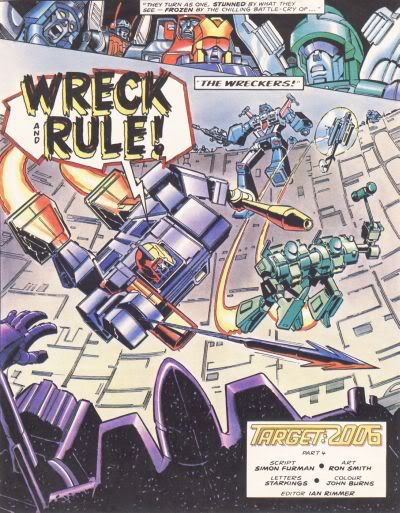
I wrote a blog post quite a while ago about The Wreckers, but to paraphrase it, they were, to me at the time, the coolest thing the comic had ever seen. They were the Autobot resistance's elite commando unit, based on Cybertron and led by Impactor, one of the few original Transformers created for the series. I genuinely don't know what it was about these guys - maybe it was because the Autobots had pretty much lost the war on Cybertron and these guys wouldn't stop fighting or maybe it was because they looked so unique or maybe it was just because they had a cool catchphrase - but, to my younger self, the team as a whole were just made of pure awesome. They seemed to be everything the Earth-bound Autobots weren't: confident, cocky, secure and not constantly looking to Optimus Prime for answers. And, of course, they were led by Impactor.
It seems weird to look back at this now, because Impactor only appeared in a handful of episodes before being killed at the end of Target: 2006, but there was something about the character that, to this day, remains unflappably cool and remains a firm favourite of mine. With him, we had a leader who was secure in himself, someone who never backed down from a challenge, but also looked out for his men and had the balls to question his superiors when he didn't agree with them. His death was a real shock to me as a kid (as was his resurrection much later, partly because it came out of the blue and partly because it wasn't your atypical comic book resurrection).
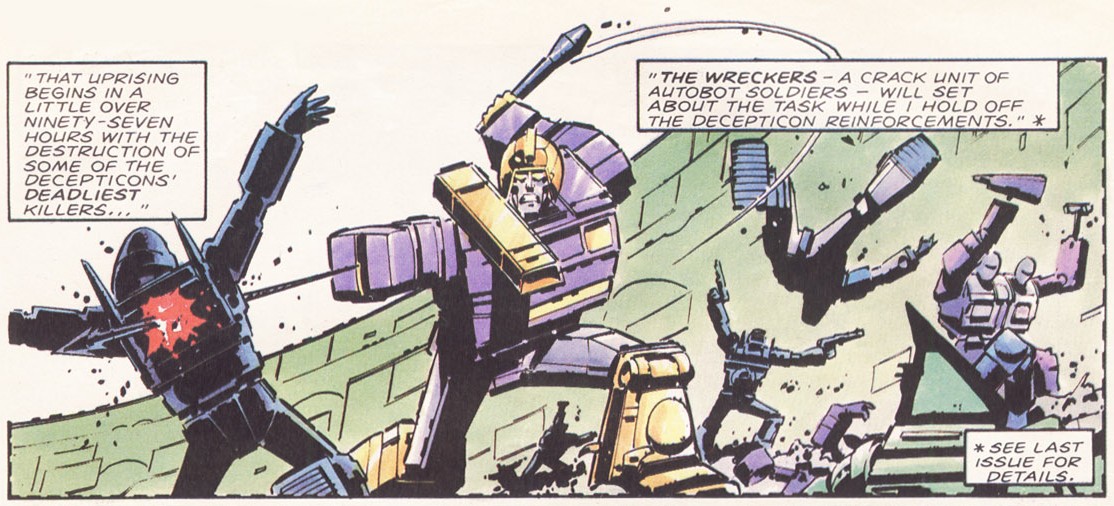 |
| Art by Geoff Senior, colours by Gina Hart |
As epic as Target: 2006 was, it suffered from some stilted dialogue and the constant need to recap the previous episodes (something that pretty much all of the UK based stories suffered from), which - looking at it now - breaks the flow a little, but at the time of its original release, it was an exciting and compelling storyline. But, things still had to be reset for the next round of US reprints, which, frankly, felt dull and seemed to lack any real meaning in the wake of it. I mean, after weeks of this huge, genuinely thrilling storyline, we get something about two Decepticons spraying graffiti over famous US monuments.
No, really.
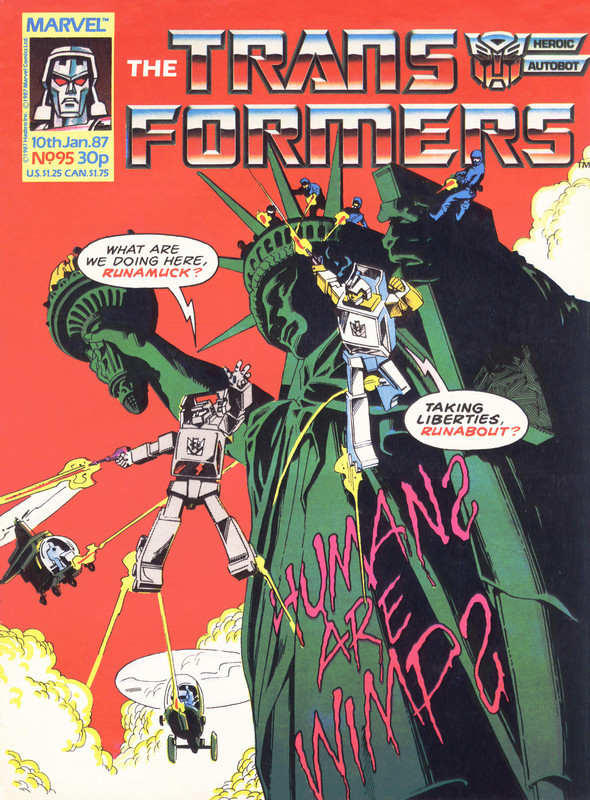 |
| Transformers (UK) #95 |
However, Furman returned with another amazing run of original UK material, including the classic Distant Thunder with Will Simpson on art and the return of the increasingly unhinged Galvatron in Fallen Angel with Geoff Senior and Jeff Anderson. It was with the latter that, arguably, Furman was finally able to cut loose; although he was still bound by Hasbro's insistence that the new toys appear as characters in the comics, he had a largely blank canvas to play with, using the cast of characters from the future timeline, and began to craft the stories that would cement Transformers UK as something unique.
It's worth noting, too, that with Galvatron's return (and his increasing slide into insanity), Furman introduced a true menace to the series that cast a long shadow over the storylines for years to come, and further hammered home the fact that the US reprints just couldn't compare in terms of…well, anything, really. The villains used in the US series (human, alien and Decepticon) were cardboard cut outs that were easily forgettable after you'd closed the comic, but Galvatron was something else. He'd already been established as the most powerful Transformer ever created, but as his mind began to unhinge, he became the one to fear. He became the unstoppable monster that would never lay down and die:
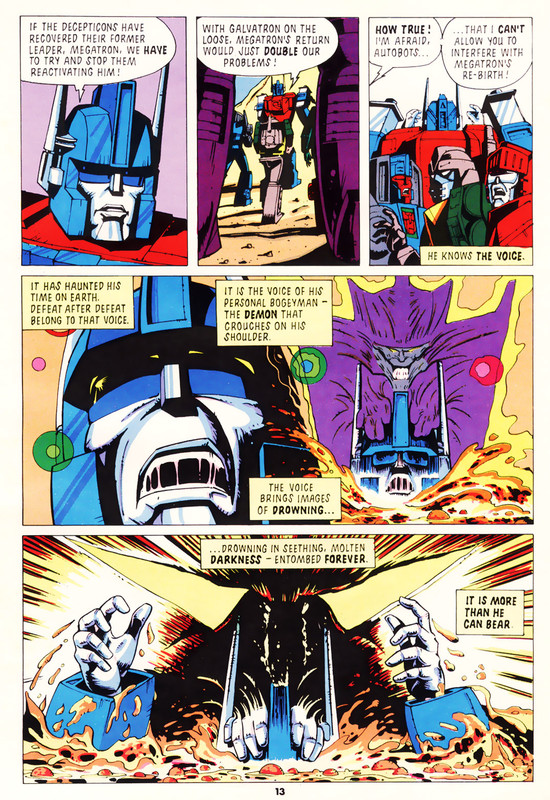
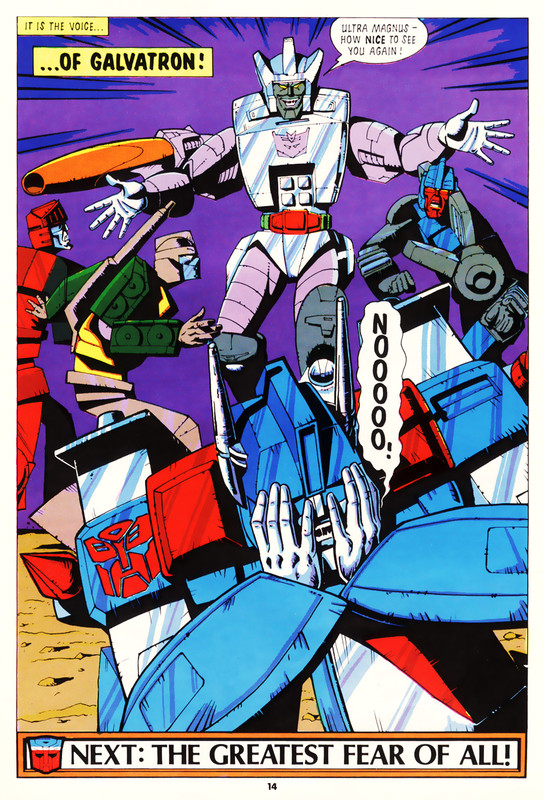 |
| Art by Lee Sullivan and colours by Euan Peters |
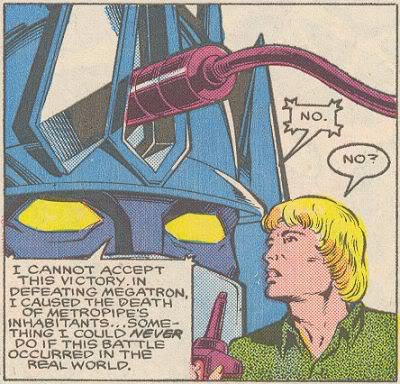
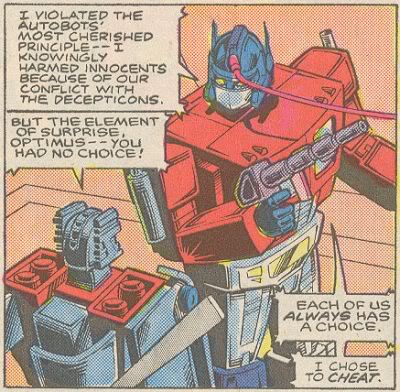
Wow. That's sound logic, Prime. You killed a bunch of characters in a computer game, so you now have to sacrifice yourself. Oh-kay...
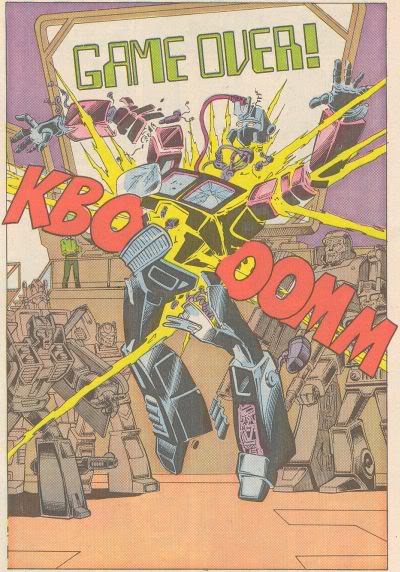 |
| Art by Don Perlin, Ian Akin and Brian Garvey, colours by Nel Yomtov |
Prime was kept alive as a "computer sprite". Which, even as a kid, I knew was just fucking lame. Now, compare that to the death of Impactor in Transformers UK, a character who didn't have nearly as much "screen time" or popularity:

As I said, Impactor had only been in a handful of episodes before that, but his death actually carried weight. Although Transformers UK was shot through with more than a dash of British cynicism, the characters weren't anti-heroes; they were the real deal. Yes, they were flawed and racked with doubts, but they were also loyal to their comrades and when the time came to fight the good fight, they did it without hesitation. To complement that, the villains became much more dangerous in a number of ways, from Shockwave's descent into paranoia, to Soundwave's duplicity to Megatron's slow descent into madness. It seems like such a simple premise to add some defining characteristics to these guys - even basic storytelling, if you will - but the US reprints never managed to do it and never elevated themselves above the level of a cash-in comic.
Transformers UK gave us stuff like Wanted: Galvatron: Dead Or Alive (by Furman, Senior, Anderson, Simpson and Reed), which featured none other than the Freelance Peacekeeping Agent known as Death's Head, who, on the strength of that first appearance in the story literally cemented himself as one of my all time favourite comic characters. In comparison, the US series gave us a string of utterly forgettable villains and supporting characters (both human and alien). And the Scraplets, which were tiny little nuts and bolts that ate Transformers, but could be killed with water. God, I wish I was making that up…
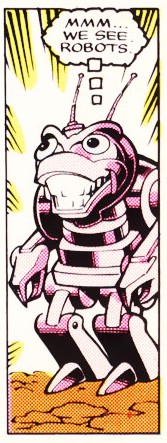
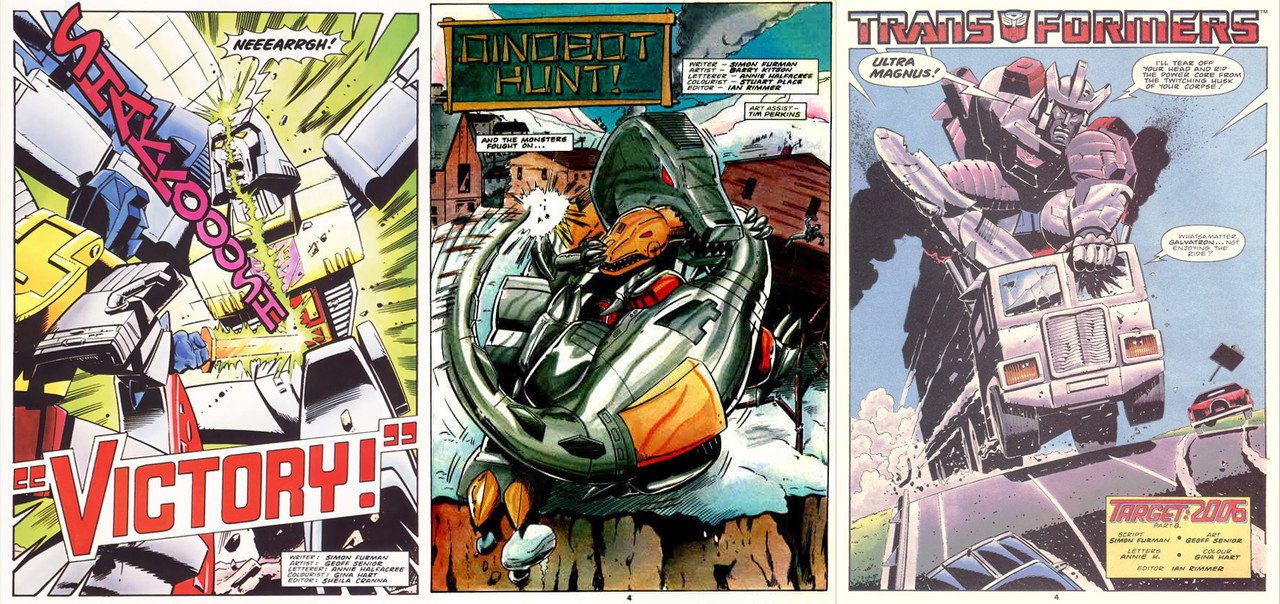 |
| Art by Geoff Senior and Barry Kitson, colours by Gina Hart and Stuart Place |
There was literally no comparison between the two strands of continuity: the UK originated stuff was just packed with an excitement and sense of action the US series sorely lacked.
Due to the nature of the UK comic, some of the concepts and characters from the US series carried over into the UK originated strips - and sometimes even built entire stories using elements of it (Second Generation, for example) - but Furman actually put some work into them and made them more memorable; Straxus, for instance, was used during a couple of issues in the US series and then killed off, but Furman brought him back - as a head in a bubble! - but made sure he wasn't just a cookie cutter bad guy to stand in for Megatron as he had been in his previous appearance, and even managed to use him in a crucial role for the larger UK storyline he was crafting.
However, through all of this, Furman and his extensive band of co-creators never lost sight of a crucial element: the Transformers were the stars of the comic, not the dull human characters the US reprints kept using over and over as a way for the readers to connect to the story (something those terrible Michael Bay movies should take note of, too). The creators brought their A-game to each and every page, actually making these toys - the characters - live and breathe on the page. The love and respect Furman brought to the work also made him go off and make several continuity fixes in surprising and clever ways.
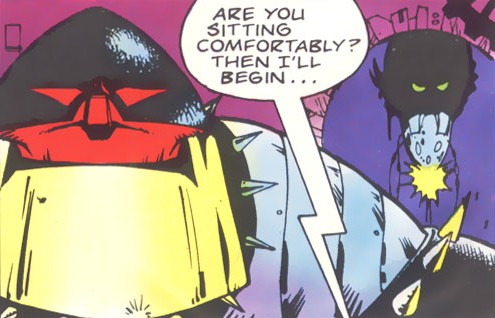 |
| Art by Lee Sullivan, colours by Steve White |
The forewords in the Titan collections explain that word came from Marvel US that the UK series had to reprint everything from the US series, which threw up more than a few continuity problems as time went on; most of them were fixed with re-writing dialogue in the US reprints, but a few had to have some more interesting solutions. With the Headmasters mini-series, for example, they had the problem of Cyclonus and Scourge appearing in a story set in the present day, when Furman had already established they weren't created until the year 2006… It would've been easy to just ignore this, but by the end of The Legacy Of Unicron storyline2, Furman solved that by having Death's Head, Cyclonus and Scourge thrown into the time stream; Death's Head was lost in time (which allowed Furman to break him out of Transformers and into Dragon's Claws and then his own series, but not before a chance encounter with a certain Time Lord) and Cyclonus and Scourge are thrown back in time to join the Decepticons in the Headmasters story.3
Probably the most interesting continuity fix, however, was when, for whatever reason, Transformers US did an adaptation of the cartoon episode The Big Broadcast Of 2006; the whole story flew in the face of everything that Furman had done with the future timeline (and actually doesn't make a whole lot of sense as a story - I mean, seriously, read it (or watch it): it's just headscratchingly bad), but it had to be reprinted. So, along with Lee Sullivan, Furman produced two single page bookends for the story that actually revealed it was just being made up on the spot by Wreck-Gar while being tortured - and, in the process, set up the next big UK arc, Space Pirates, which in turn led into the final epic storyline, Time Wars.
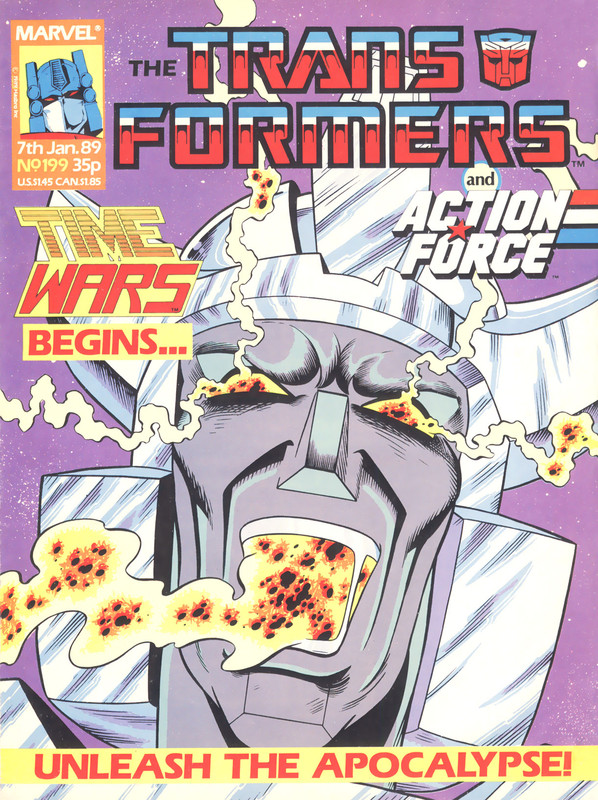 |
| Transformers (UK) #199, art by Art Wetherell/Dave Harwood |
To this day, Time Wars remains one of my favourite - if not my all time favourite - Transformers UK storyline. It was- literally! - apocalyptic and saw the culmination of so many plot threads that Furman had weaved through his work. It actually had me on the edge of my seat at the end of each episode. All of the time travelling shenanigans that had permeated the UK series had created a tear in reality that was slowly destroying the universe as we know it; with Cyclonus and Scourge being "out of time", their presence in the present day was exacerbating the problem (and showed how Furman was using his own continuity fixes to great effect). And, of course, Time Wars also contained, probably, the greatest cliffhanger in comics:
| Art by Lee Sullivan, colours by Euan Peters |
I remember being bowled over by that page when I was a kid. Here was my favourite Transformer, about to tackle the most powerful and dangerous Transformer in the history of the entire race - who was now completely insane! - while the universe was literally tearing itself apart around them. I couldn't believe I was actually expected to wait 7! Whole! Days! For the conclusion!
After Time Wars reached its end, the original Transformers material was relegated to black and white strips, which proved to be a mixed bag, but Furman always furnished them with the same love and respect he had since he began. The US reprints, on the other hand, touched on what many regard as its own epic with the Underbase Saga, but that storyline lacked the depth and urgency we'd seen in with the original UK material. I mean, in Time Wars, we'd just seen the end of reality itself avoided by the narrowest of margins, but in the Underbase Saga, Starscream tried to steal a massive floating thing careening through space to become a god or something. I literally don't even remember.
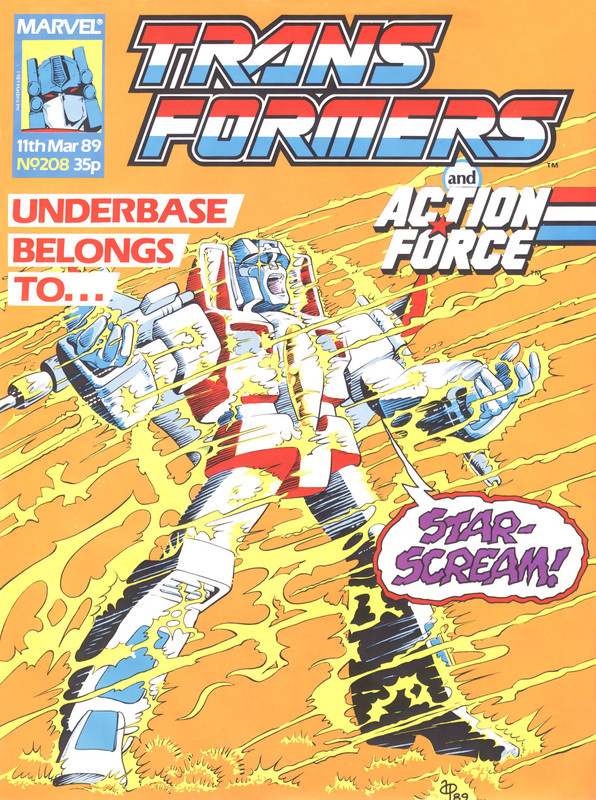 |
| Transformers (UK) #208 |
Budiansky remained on the US series for a few more issues after the Underbase storyline, until Simon Furman was finally handed the reigns and turned the whole thing into a galaxy spanning space opera, with ancient cults, credible villains, demi-gods and the origin of the Transformers race (he's said in the past that he got away with so much of this because Hasbro were losing interest in the comic by that point, but it's worth noting how many of the new toys Furman still had to include). Not only did he introduce more of the solid character work in line with what he'd done in the UK originals, he also introduced Unicron4 - the planet-sized Transformer from the movie, who was now one of the aforementioned demi-gods - and actually gave Optimus Prime a death that was as epic as the character demanded:
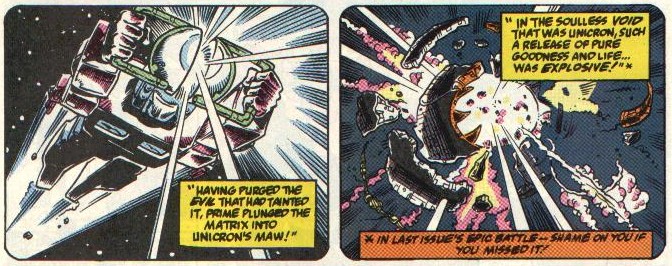 |
| Art by Andrew Wildman/Stephen Baskerville, colours by Nel Yomtov |
Yeah. Optimus Prime just single-handedly destroyed a planet-sized robot. That's a death scene...
Those twenty or thirty issues that Furman did blew pretty much everything that had come before them out of the water. He brought that same love he had for the UK series to the US and actually made you care about these characters, by giving them the same unique personalities they'd had in the UK (Grimlock, for example, became the sympathetic, but stubborn character he'd always been in the UK series, rather than the ridiculous psychopath he'd been under Budiansky's tenure). He also re-introduced Megatron, who, for the first time in the US series, actually felt like a genuine threat to the Autobots, and Thunderwing, a new villain who tore through both the US and UK series like a whirlwind. Furman brought the same simple viewpoint to the US series as he did with the UK: Transformers was, first and foremost, an SF action/adventure comic that just happened to star giant alien robots that had their own toyline. And it worked.
Furman was initially paired up with Jose Delbo on pencils (and Dave Hunt on inks), which robbed a few of his early US stories of any real visual punch or panache (although, it has to be said, Delbo's art takes on a far more appealing tone when he's inked by Dan Reed in his penultimate issue), but he was quickly joined by Geoff Senior and Andrew Wildman, who saw out the end of the series with him and reminded you why Transformers UK was so revered in the first place. Gone was the Mighty Marvel Style that had permeated the series and in came the huge widescreen vistas, the hyper-kinetic action sequences and the dynamic body language that turned those final few stories into the fondly remembered classics.
However, Furman was still writing some great stuff the UK series, tying up the dangling plot threads left over from Time Wars and telling some - in my opinion - forgotten classics (Perchance To Dream and The Way Of The Warrior to name but two). The two strands of Transformers comics genuinely felt like a coherent whole for a time5 and expanded the Transformers universe in a way that the original US comics and the cartoon series never had. But, as all good things must, the original UK material came to an end, albeit in a rather unspectacular way, leaving the last 44(!) issues of the UK series to be filled with US reprints and reprints of some of the best UK material. But, considering all those amazing stories the comic put out, I think we can forgive it.
I could go on and on about more of the the awesome stories that ran through the series (such as Prey and Grudge Match), but I there's one story I think deserves a special mention before I wrap this up: City Of Fear.
Or, if you prefer, zombie Transformers.
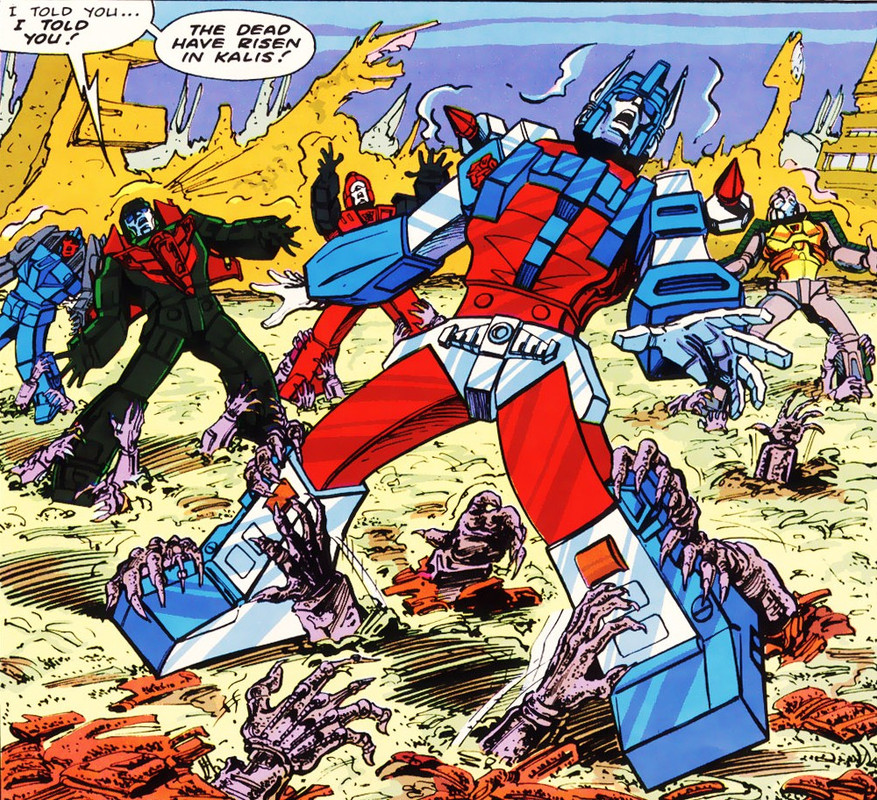 |
| Art by Dan Reed, colours by Euan Peters |
Nuff said.
1. Transformers: The Movie is actually set in 2005, but the original plan was, apparently, to have it set in 2006, until a decision late in the production changed it. By the time the Marvel UK team got wind of it, it was too late to change the dates. But, hey, Target: 2005 doesn't quite have the same ring to it, does it?
2. Interestingly (or perhaps not), The Legacy Of Unicron ran through #100 of Transformers UK, which featured the never before revealed origin of the species, which Furman later used when he took over Transformers US. That origin was markedly different to the one featured in the cartoon series.
3. When Hasbro released the Headmasters and Target Masters toy lines, they re-released Cyclonus, Scourge, Kup, Blurr and Hot Rod under the Target Masters banner; they were the same figures, but with new "transforming" weapons. I find it amazing that Furman took a cynical cash grab and turned it into a major plot point for the comic series.
4. Unicron had never actually appeared in the US series until that point. His appearances in the UK series had been relegated to the future timeline of 2006 and beyond. If you really wanted to, you could say that the reason Unicron was so afraid of The Matrix in Transformers: The Movie was because his body was destroyed by it in the past…
5. During the Matrix Quest storyline in Transformers US, Furman tried to synch the two series, but the differing publishing schedules made it next to impossible. However, a two part story called Deathbringer (by Furman and Senior) ran in Transformers UK and was then referenced in a later issue of Transformers US.
